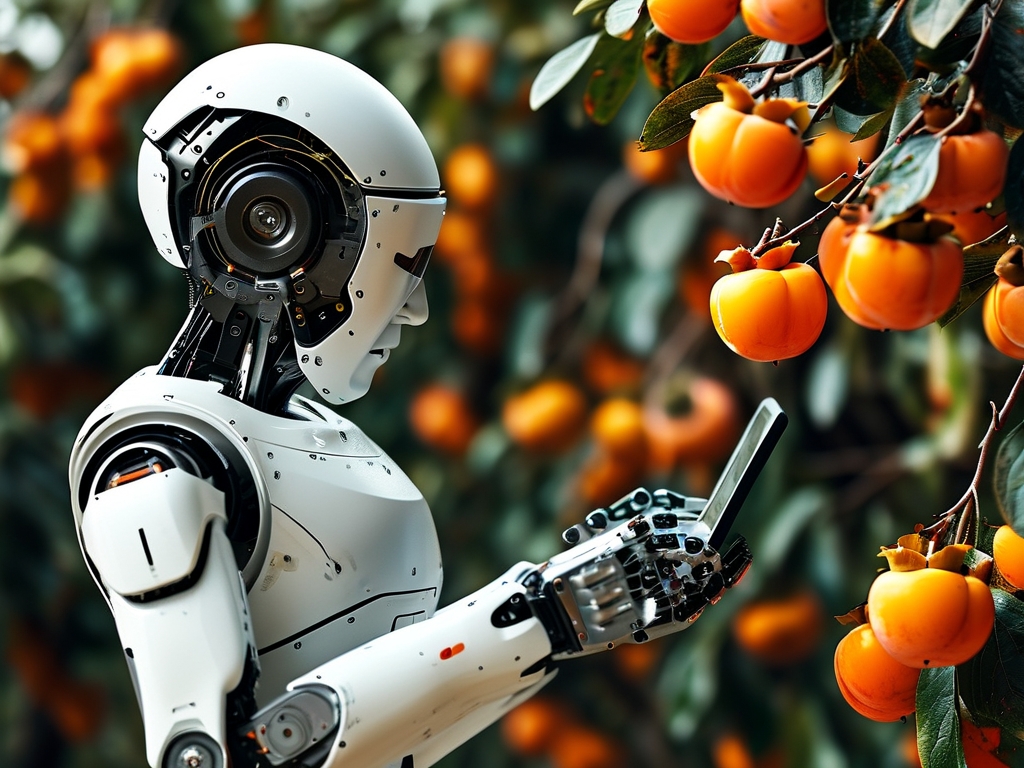The agricultural sector is witnessing a groundbreaking shift as robotic persimmon harvesting technology emerges to address labor shortages and improve efficiency. This innovation combines advanced machine vision, precision mechanics, and artificial intelligence to redefine how delicate fruits like persimmons are harvested.

Challenges in Traditional Persimmon Harvesting
Persimmon cultivation has long relied on manual labor due to the fruit's delicate nature. Skilled workers must carefully twist each fruit from the stem to avoid bruising, a process requiring both speed and precision. However, aging farm populations and declining interest in agricultural work have created significant labor gaps. In Japan, where persimmons hold cultural and economic importance, over 40% of fruit farmers report difficulties finding reliable harvest crews. Similar challenges exist in major producing regions like South Korea, Spain, and California.
How Robotic Harvesters Work
Modern persimmon-picking robots employ multi-spectral cameras to identify ripe fruits through color analysis and texture recognition. The system uses LiDAR sensors to create 3D orchard maps, enabling precise navigation between trees. A patented soft-grip end effector, inspired by human hand movements, applies just enough pressure to detach the fruit without damaging the protective calyx.
Field tests conducted in Wakayama Prefecture demonstrated remarkable progress:
- Harvesting accuracy: 93% (ripe fruits successfully picked)
- Damage rate: Below 2% (compared to 5-7% in manual harvesting)
- Operational speed: 1 fruit every 2.8 seconds (approaching human efficiency)
Technical Breakthroughs
Developers overcame significant challenges in creating this technology. The variable opacity of persimmon skins required adaptive lighting systems that adjust to sunlight conditions. Engineers also designed a unique stem-detection algorithm that differentiates fruit stems from twigs and leaves with 98% accuracy. A modular design allows farmers to retrofit existing orchard infrastructure rather than replant trees in robotic-friendly patterns.
Economic and Environmental Impacts
Early adopters report reduced labor costs by 60-70% over five-year periods. The technology also minimizes fruit waste through precise picking, potentially increasing yields by 15-20%. Environmentally, robotic harvesters enable more sustainable practices by reducing the need for chemical ripening agents traditionally used to synchronize harvest periods.
Current Limitations and Future Development
While promising, the technology faces hurdles. The initial investment ($120,000-$180,000 per unit) remains prohibitive for small-scale farms. Researchers are working on swarm robotics models where multiple smaller robots collaborate, potentially lowering costs by 30-40%. Another focus is improving performance in adverse weather—current models struggle in heavy rain due to visual recognition limitations.
Industry analysts predict commercial viability within 3-5 years as battery technology and AI pattern recognition advance. Hybrid human-robot teams may emerge as an intermediate solution, combining machine efficiency with human problem-solving for complex picking scenarios.
Cultural Implications
In regions where persimmon harvesting carries generational traditions, some pushback has occurred. Developers are addressing this through farmer education programs and customizable settings that allow adjustments to harvesting parameters, preserving regional quality standards. In Italy's Tuscany region, prototype robots have been programmed to recognize and preserve century-old heirloom varieties during selective harvesting.
Robotic persimmon harvesting represents more than technological novelty—it offers a sustainable path forward for fruit cultivation amid global agricultural workforce challenges. As the technology matures, it may set precedents for other delicate crops like peaches or table grapes. With ongoing refinements in affordability and adaptability, these intelligent machines could soon become as fundamental to orchards as tractors are to grain fields, ensuring the continued viability of persimmon cultivation worldwide.









